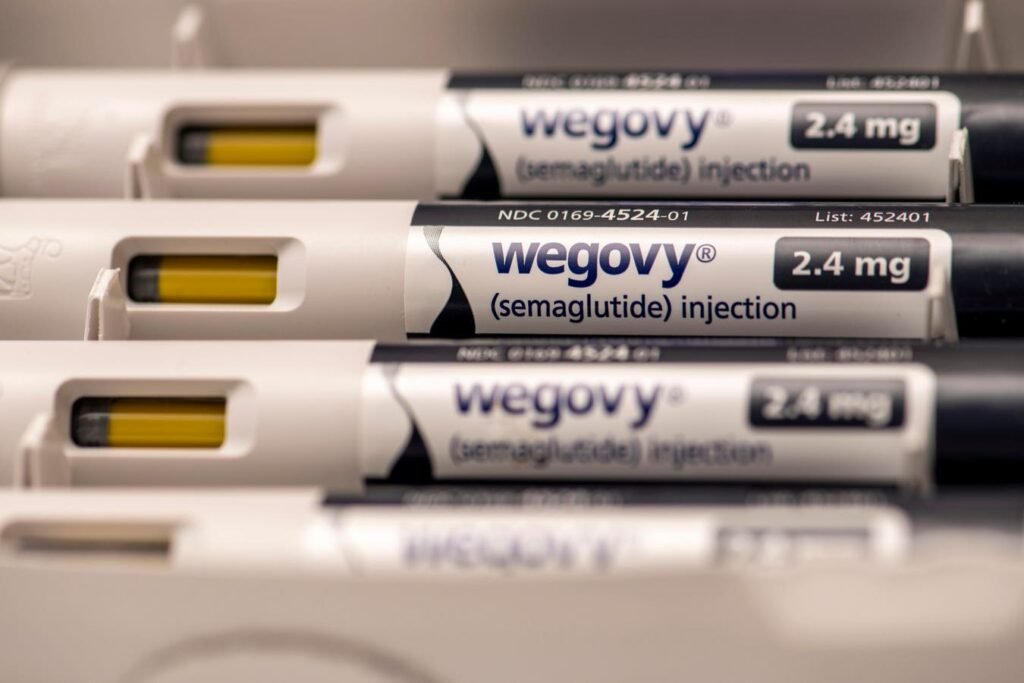Wegovy (semaglutide) is a self-injectable prescription weight loss medicine that has helped people … [+]
UCG/Universal Images Group via Getty Images
For those who are overweight or obese, medications known as glucagon-like peptide-1 agonists, or GLP-1s, have become very popular as weight loss treatments. Taken in accordance with instructions on the label and an appropriate diet and exercise regimen, GLP-1s are effective at lowering a person’s weight. Given the various co-morbidities associated with obesity, including diabetes and cardiovascular disease, intuitively, it would seem that GLP-1 use for weight loss would reduce overall medical costs despite the increase in drug spending. But thus far, the data don’t show this.
The pharmacy benefit manager Prime Therapeutics released a study in October stating that “findings indicate in the real world that individuals taking GLP-1 therapies without diabetes [over a two year period] will see no medical cost offset.” Analysis of health insurance claims showed that the treatments did not lower other medical costs. Overall, average healthcare costs increased 46% over two years for patients trying GLP-1 drugs for obesity, from $12,695 to $18,507.
The Congressional Budget Office states that there does not appear to be any direct empirical evidence pointing to a medical cost offset. This also includes accounting for the positive impact of GLP-1s on heart disease. Data from a large, randomized clinical trial named SELECT indicate cardiovascular protective benefits from taking the GLP-1 weight loss therapeutic Wegovy (semaglutide) for a sub-population with preexisting cardiovascular disease. The Food and Drug Administration added a cardiovascular indication to Wegovy in March 2024.
In the trial, Wegovy decreased relative risk by 20% of a composite primary endpoint measure which included death from cardiovascular causes, non-fatal myocardial infarction and non-fatal stroke. But the data didn’t show Wegovy lowered the risk of cardiovascular death by a statistically significant margin. Further, the absolute risk reduction is small, which translates into a comparatively high number needed to treat of 67. This means that 67 people with (severe) cardiovascular risk need to be on Wegovy consistently to avoid one cardiovascular event, for example, a heart attack.
A peer-reviewed study published this past autumn estimated that about 4.7 million U.S. adults would meet SELECT trial eligibility criteria. Applying a lifetime horizon model, which simulates all relevant costs and health outcomes over patients’ lifetimes, researchers projected that semaglutide-based products would avert 538,000 major cardiovascular events at an incremental cost of $613 billion. They then calculated an incremental cost effectiveness ratio for semaglutide (costing $700 per month per person) of $443,000 per quality-adjusted life year gained. Generally in the U.S., healthcare technologies and services are considered cost-effective if they’re below $150,000 per QALY. And so, semaglutide does not meet this criterion at its current price.
Up to 20% of (specialty) drugs can be cost-saving, that is, for each dollar spent payers can actually save money over a given period of time in terms of lower downstream costs. But the majority of prescription drugs are not cost-saving. In other words, they do not offset medical costs. Most of the time, more money is spent to get additional benefits relative to standards of care. This is what is called value for money. But it is not necessarily the same thing as cost-saving. And in the case of the latest wave of weight loss drugs, right now at their current prices they are not even cost-effective, let alone cost-saving.
Perhaps the time frame being considered is the issue. Maybe in the long run, say, after ten years, GLP-1s for weight loss are cost-effective or even cost-saving. Other than modeled projections, since there hasn’t been a decade long study examining GLP-1s for obesity, we just don’t know yet.
But suppose they do prove to be cost-effective or cost-saving in long-term studies. Insurers in the U.S. would still face the problem of churn, or enrollee turn-over, as they migrate from one health plan to another. GLP-1s cost payers money upfront, but with member churn it’s unlikely a typical insurer will have the same enrollee ten years from now to realize potential cost-effectiveness or savings. A publication notes that one in five members disenrolled from a commercial insurer each year. Furthermore, churn in insurance programs such as Medicaid is much worse.
This helps explain why payer coverage restrictions for GLP-1s used for obesity continue to be a hurdle for patients who seek access. According to Becker’s Hospital Review, some insurers and self-funded employers across America are dropping coverage altogether or imposing strict limits in 2025, reflecting the financial and operational challenges posed by the high-cost medications.
If Medicare were to cover weight loss drugs—it currently doesn’t, with the exception of Wegovy for a cardiovascular indication—the program wouldn’t be immune to cost issues. Therefore, while the Biden administration’s proposed reinterpretation of Medicare Part D coverage of weight loss medications would allow for access to such therapies to approximately 3.4 million Medicare beneficiaries who have obesity, for budgetary reasons it’s unclear if the incoming Trump administration will go along with it.
Further compounding the cost burden issues for insurers is the fact that patients are often non-persistent. In the Prime Therapeutic study cited above, only one in four patients were still on Wegovy or Ozempic two years later.
In a recent white paper published by the Blue Cross Blue Shield Association last summer, it was revealed that only 15% of individuals were able to see meaningful benefits from GLP-1s.
This data suggests that while GLP-1s are valuable products for some individuals, they may not be effective for the majority. Despite the hype surrounding these medications, it is important to consider the actual success rates and outcomes when evaluating their effectiveness.
For more information, you can refer to the original source here: minority of patients.


